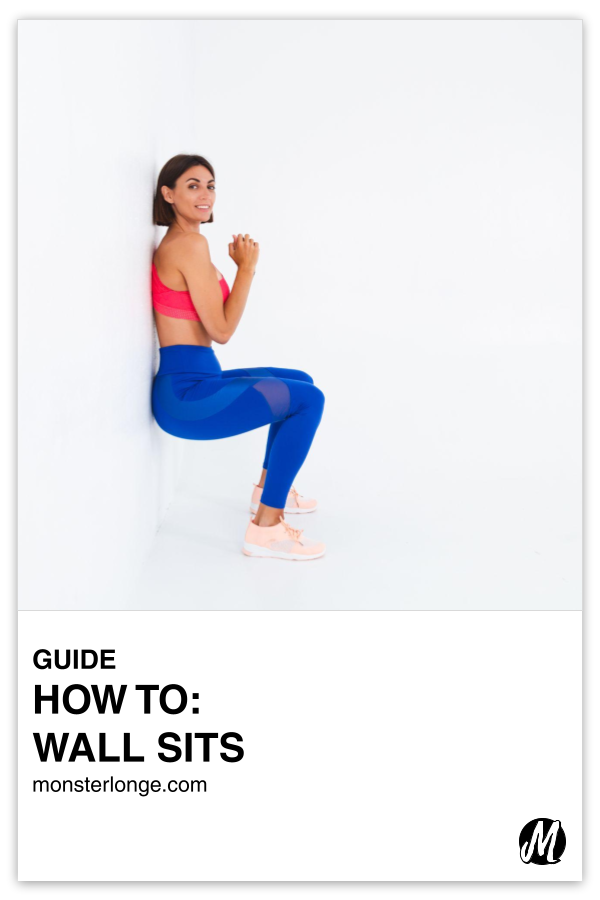
How To: Wall Sits
A recent study says that wall sits are great for cardiovascular health.1 The exercise is also known as wall squats. Published in the British Journal of Sports Medicine, the study in question found that isometric exercises, which is the type of activity that wall sits are, can reduce blood pressure more effectively than cardio, high-intensity interval training (HIIT), and weightlifting.2Isometric exercise involves activity performed with the body in one position without movement. Basically, it means the use of a static hold. Examples of isometric exercises in addition to wall sits include planks and dead hangs. Now, research suggests that these types of exercises are better at lowering and controlling blood pressure because the hold, or isometric contraction, increases tension in the muscles, which causes a sudden rush of blood when the hold is released and the muscle relaxes. It’s this increased blood flow that helps improve blood pressure.
As for details about the study, researchers conducted a systematic review of 270 studies. In total, the studies spanned over 23 years and consisted of almost 16,000 participants from all over the world and with different health conditions. When the drop in the resting blood pressure of the subjects was compared after various forms of exercise, all the training modes were found to lower blood pressure. Isometric exercises, however, were found to be the most effective at the task, followed in order by a combination of cardio and weightlifting, weightlifting and cardio separately, and then HIIT. When it came to specific exercises, wall sits were better at reducing blood pressure than traditional activities like cycling and running.
If the findings of the study are true, that’s about all that wall sits have going for them. Well, that’s about all that wall sits have going for them except for also improving stability and muscle endurance. When it comes to performing wall sits to build muscle in your legs, the bodyweight exercise does very little, if anything, for hypertrophy or strength development. There are much better exercises available for either purpose.
INSTRUCTIONS
1). Stand with your back two feet away from a wall and your feet shoulder-width apart.3The exercise can be made a bit more challenging by placing a stability ball between yourself and the wall. Doing so will not only increase the difficulty but it’ll also engage the core more. The instructions are the same, except for the ball, which should be placed in the small of your back.
2). Lean your back against the wall, place your hands on your thighs, and slide down the wall as you bend your knees and hips to lower yourself until your thighs are parallel to the ground.4There should be a 90° bend in both your hips and knees so your body position is similar to that of sitting in a chair. DO NOT GO LOWER!!!
NOTE: Some individuals may have to sit higher at a 45° angle or less to build up the strength necessary to perform the exercise at the appropriate depth.
3). Brace your core and let your arms hang down at your sides or clasp your hands in front of your chest.
4). Hold this position for 15 to 60 seconds while shifting your weight to your heels.5Make sure your shoulders, back, and hips maintain contact with the wall at all times. Your knees should also remain directly over your ankles and never shoot past the toes, in addition to your legs staying straight and not caving in or bowing out.
5). Place your hands on your thighs and push through your heels as you slowly slide your back up the wall until you’re standing.
For a workout routine that possibly includes wall sits, as well as other exercises geared specifically to your goals, training experience, injury history, and available equipment, then find out more HERE
Glossary: arms, cardio, chest, exercise, goal, hypertrophy, muscle, plank, routine
- How To Eat Healthy During Thanksgiving - November 20, 2024
- Weight Loss Tip: no.2620 - November 20, 2024
- Is Going To The Gym Once A Week Enough? - November 19, 2024
